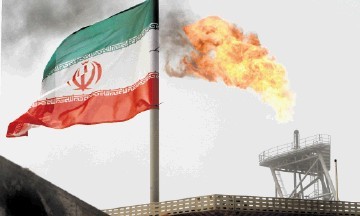
The world is awash in crude, but big oil companies are lining up to develop new fields in Iran even as they slash spending and abandon exploration elsewhere. One thing explains this paradox: cost.
Iran is one of the cheapest places in the world to tap new oil fields and pump from existing wells. The slump in crude prices makes Iran even more attractive to investors, assuming its nuclear deal with world powers leads to an easing of sanctions, said the International Energy Agency.
The Persian Gulf nation has worked up a “vastly improved version” of its oil contracts to attract international oil companies, according to the IEA.
“Costs are low because they have giant fields which produce economies of scale, the terrain is mostly straightforward and reservoirs are highly prolific,” Robin Mills, a Dubai-based analyst said.
If prices stay low, production costs could drop even further in Iran and its neighbor Iraq, he said.
Cheaper barrels are a significant lure to companies as they eliminate jobs and defer expensive projects following a 40% plunge in oil prices in the past year.
Shell abandoned its exploration campaign in the Arctic last month citing high costs, while Total reduced production targets after a fresh round of investment cutbacks. Both companies have dispatched executives to Tehran in recent months for talks with the National Iranian Oil Co.
While the cost of developing a field in Canada or the US can range between $59 and $114 a barrel, the expense in Iran doesn’t exceed $31, the IEA said in a report this week.
Companies looking at re-entering Iran also need to weigh the political risk, said Manaar’s Mills.
Even after sanctions are lifted, investors will still face the danger restrictions will “snap-back” if Iran is perceived as breaking its side of the deal. This provision could be a “major problem” for lenders financing projects there, according to Francisco Blanch, global head of commodities research at Bank of America Corp.
Nevertheless, the vast opportunities in Iran will tempt oil companies, said Aneek Haq, an analyst at Exane BNP Paribas.
“In a world where oil majors have restricted areas where they can find large reserve bases to replace production in the future, Iran obviously cannot be overlooked,” he said.
While the data shows Saudi Arabia also has low costs, the country is largely off limits to foreign investment in oil. Brent crude, the international benchmark, traded at $49.17 a barrel today on the London-based ICE Futures Europe exchange.
Iran’s neighbor Iraq offers a good illustration of the rewards, but also the hazards, of chasing low-cost barrels in the Persian Gulf.
After decades of neglect due to war and sanctions, international oil companies started to redevelop aging oil fields and explore for new resources after the US-led invasion in 2003.
Output has doubled in the past decade to a record 4.3 million barrels a day in September, turning the nation into the second-biggest oil producer in the Organization of Petroleum Exporting Countries, IEA data shows.
Genel Energy, which operates in Iraq’s semi-autonomous Kurdish region, says it can pump oil for as little as $1.50 a barrel.
“Our operations are therefore profitable even during a time of sustained fall in the oil price,” said Andrew Benbow, a spokesman for London-based Genel.
The company’s gross oil production from its two main fields in Kurdistan surged by about two thirds to 194,000 barrels a day between 2013 and 2014.
Yet its shares fell about a third over the period as a dispute between the Kurdistan Regional Government in Erbil and the federal government in Baghdad meant international companies didn’t receive any payment for crude exports from December to August.
The Kurdish government re-started payments last month.
“The ongoing dispute between Baghdad and Erbil has created quite a bit of political risk,” James Davis, head of oil supply at FGE in London said by e-mail. “Undefined payment terms, broken agreements, concerns over whether contracts are valid or not,” remain problems, he said.
Recommended for you
